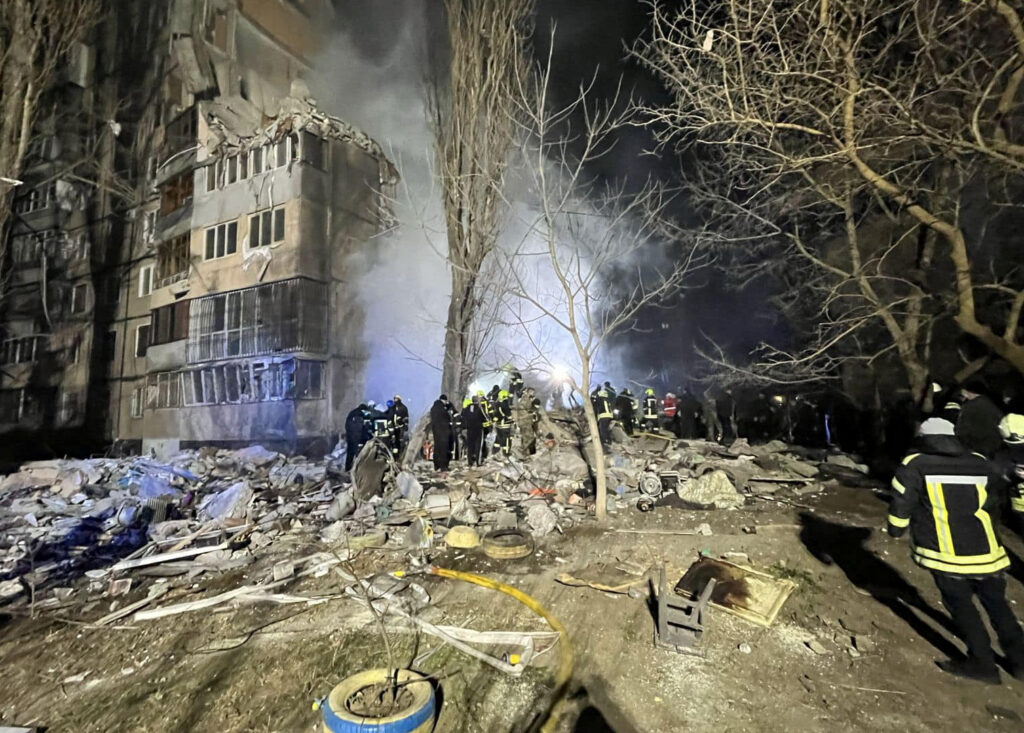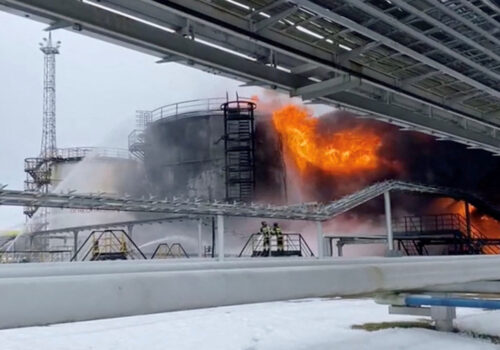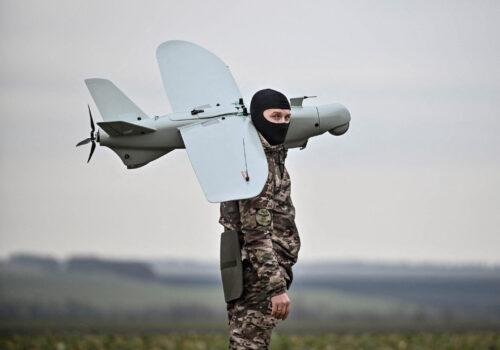With efforts to pass new US military aid to Ukraine still stuck in Congress, Ukrainian President Volodymyr Zelenskyy recently singled out reinforcing the country’s air defenses as one of Kyiv’s most pressing priorities. “The most important thing is to unblock the sky,” Zelenskyy commented during a press event in Kyiv to mark the second anniversary of Russia’s full-scale invasion on February 25.
Recent reports indicate that unless Congress is able to break the current deadlock, Ukraine will face potentially catastrophic shortages of ammunition and air defenses within weeks. Meanwhile, Russia is reportedly bolstering its own growing stockpiles with deliveries of ballistic missiles from Iran.
Ukraine’s Western partners have provided significant air defense capabilities over the past two years since the onset of Russia’s invasion. This proved particularly crucial during the first winter of the war, when Russia launched a sustained air offensive against Ukraine’s civilian energy infrastructure in an apparent bid to freeze the country into submission and force Kyiv to surrender.
Despite improvements in Ukraine’s air defenses, the country remains highly vulnerable to Russian missile and drone attacks. While Kyiv now has relatively strong air defense coverage, other major cities such as Kharkiv, Odesa, and Zaporizhzhia are far less protected and regularly experience deadly bombardments.
Stay updated
As the world watches the Russian invasion of Ukraine unfold, UkraineAlert delivers the best Atlantic Council expert insight and analysis on Ukraine twice a week directly to your inbox.
The most prized assets within Ukraine’s patchwork air defenses are the Patriot systems the country has received from international partners. The US military’s most advanced air defense system, Patriot batteries are capable of shooting down nearly all of the missile types currently being used by Russia to strike targets across Ukraine. The Ukrainian military has also reportedly deployed Patriots in an innovative offensive capacity to shoot down Russian war planes close to the front lines of the conflict.
So far, Ukraine has only received a handful of Patriot systems. Given their effectiveness, Kyiv is understandably eager for more. Speaking in late February, Zelenskyy said the delivery of ten Patriot systems would be enough to have a significant impact on the course of the war. He argued that this would allow Ukraine to shield big cities and vital infrastructure while also defending the skies above the battlefield and potentially enabling Ukrainian troops to break through fortified Russian defensive lines.
At the same time, there is recognition in Kyiv and among the country’s partners that Ukraine’s air defense challenges cannot be solved by more Patriot systems alone. With individual missiles costing millions of dollars, the Patriot system is not a cost-effective option, especially when targets include waves of relatively cheap kamikaze drones that Russia is receiving from Iran and also producing domestically in increasingly large quantities.
Eurasia Center events

In order to counter Russia’s growing aerial threat, Ukraine’s partners must continue helping the Ukrainian military establish a multi-layered air defense network covering the entire country. This network should be designed with economic factors and supply sustainability in mind. It should also reflect the expanding variety of drones and missiles being deployed by the Russians.
Russia’s most dangerous missiles, such as the Kinzhal, are often deployed within larger bombardments that include a range of ballistic and cruise missiles alongside drones. These complex attacks are particularly challenging for Ukrainian air defense units. “The most difficult is an attack by various types of aerial targets,” confirmed one Kyiv air defense commander in summer 2023.
Ukraine’s international partners need to provide a range of additional air defense tools such as laser-guided weapons that can help counter Russia’s use of drones. US-made Hawk systems, which predate the Patriot system, have also proven a valuable addition to Ukraine’s air defense arsenal, as have gun trucks. A more diverse array of systems will enable Ukrainian air defense units to target large numbers of incoming drones without depleting their own limited supplies of expensive interceptor missiles.
Providing Ukraine with enhanced air defenses is essential for the country’s war effort. This will allow Ukraine to defend its civilian population and vital infrastructure from Russian attack, while also strengthening the country’s resilience and making it possible for business and everyday life to continue. This is critical if Ukraine is to withstand the Kremlin’s attrition tactics. With Russia now reportedly receiving missiles from both Iran and North Korea, it is time for Ukraine’s partners to step up their own deliveries of air defense systems and ammunition.
Olivia Yanchik is a program assistant at the Atlantic Council’s Eurasia Center.
Further reading
The views expressed in UkraineAlert are solely those of the authors and do not necessarily reflect the views of the Atlantic Council, its staff, or its supporters.

The Eurasia Center’s mission is to enhance transatlantic cooperation in promoting stability, democratic values and prosperity in Eurasia, from Eastern Europe and Turkey in the West to the Caucasus, Russia and Central Asia in the East.
Follow us on social media
and support our work
Image: Rescuers work at a site of an apartment building heavily damaged by a Russian drone strike, amid Russia's attack on Ukraine, in Odesa, Ukraine, in this handout picture released March 2, 2024. (Press Service of the Operational Command 'South'/Handout via REUTERS)





